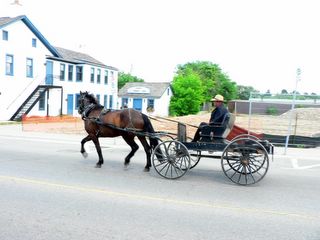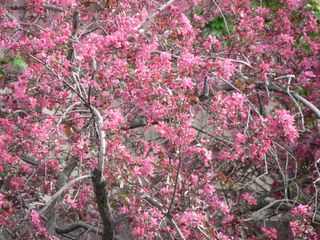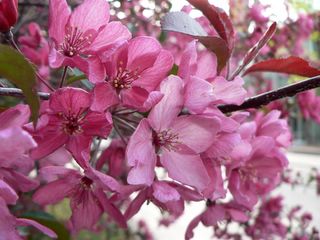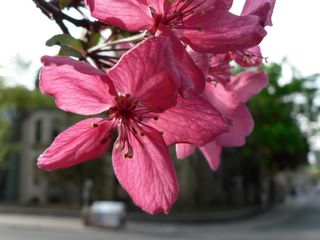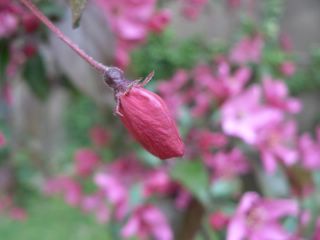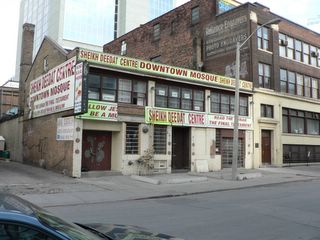St. Jacobs
Last week Wednesday, my friends Ann and Rimmer took me for a ride to the country side. We went to St. Jacobs, one of the best known towns in Mennonite country. The Mennonites are a protestant (anabaptist) sect who reject the use of modern equipment, electricity, and such. They strive to live simple lives, usually in agriculture. In principle, they do not buy anything from the society at large, although they do not seem to object to sell to that same society. In a way, although this may sound somewhat disrespectful, they are technophobes, not unlike the people of Flanders (where I come from), but with a very important difference. They totally lack a thirst for status symbols.
There is not much to see in St. Jacobs, but it is very interesting nevertheless, especially for someone living in a big city. Going to St. Jacobs, one sees a nice part of the Ontario country side. After all, Canada is an agricultural country, and that is something city-dwellers like myself do not always realize. St. Jacobs' main street is very commercial, with plenty of stores catering to tourists who come to have a look at the Mennonites. They are often hard to spot, as they do not parade themselves for all to see. The most one can normally hope for is what you can see in the pictures: people whizzing by in their horse-drawn carriages.
The main attraction of St. Jacobs is the gigantic indoors farmer's market where one can buy the freshest and most delicious agricultural products that never make to the cities. St. Jacobs' Farmer's Market is probably the largest of the country and definitely worth a visit. I have no pictures since I only went there once, at a time when taking pictures was not a priority. We did not go this time, for the simple reason that there is no farmer's market on Wednesday.
One word of caution to people who want to go to St. Jacobs by car. This place is hard to find, and most of the signposts along the road are useless to outsiders. It took us about 60 kilometers of driving around before we found it. It was just as bad as Belgium, with one difference: the roads in Ontario are a lot better.
Would I go again to St. Jacobs? Absolutely. It is worth the visit. Not only for what one sees over there, but also for what the Mennonites represent: an alternative to our modern society.



